Creating Stunning Landscapes: Unleashing the Power of Landscape Creations
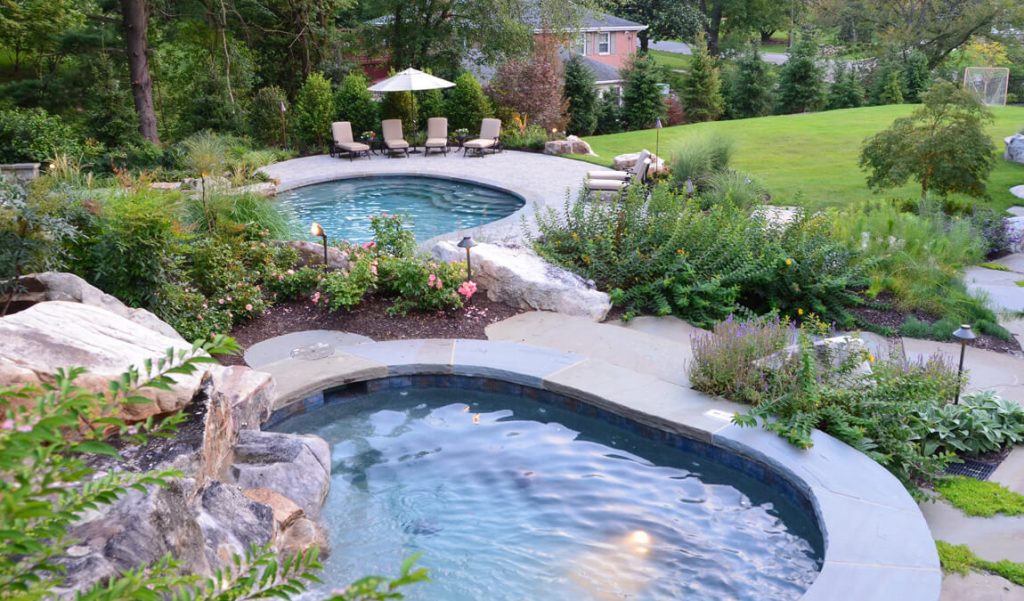
- The Art of Landscape Design
Understanding the Principles of Landscape Design
Landscape design is both an art and a science, combining creative vision with practical knowledge. By understanding the principles of landscape design, you can create stunning outdoor spaces that are not only aesthetically pleasing but also functional and sustainable.
The key principles of landscape design include balance, unity, proportion, rhythm, focalization, and simplicity. Balance refers to the visual equilibrium in a design, achieved by arranging elements in a harmonious manner. Unity brings all the elements together, creating a sense of cohesion and harmony. Proportion ensures that the size and scale of the elements are pleasing to the eye. Rhythm creates a sense of movement and flow, while focalization highlights specific areas of interest. Finally, simplicity emphasizes the importance of clarity and minimalism in design.
By applying these principles to your landscape design, you can create a visually stunning outdoor space that is both functional and harmonious.
Exploring Different Design Styles for Stunning Landscapes
There are many different design styles to choose from when creating a stunning landscape. Each style has its own unique characteristics and can evoke different moods and feelings.
For a classic and timeless look, consider a formal garden design. Formal gardens are characterized by symmetrical layouts, geometric shapes, and well-defined pathways. They are often associated with elegance and sophistication.
If you prefer a more relaxed and informal style, a cottage garden design may be the perfect choice. Cottage gardens are filled with colorful flowers, lush foliage, and winding pathways. They are known for their charming and romantic appeal.
For a minimalist and contemporary look, you might opt for a modern garden design. Modern gardens often feature clean lines, sleek materials, and minimalist plantings. They create a sense of calm and simplicity.
By exploring different design styles, you can find one that resonates with your personal taste and creates a stunning landscape that reflects your unique style.
Using Color Theory and Plant Selection to Create Impactful Landscapes
Color is a powerful tool in landscape design and can be used to create impactful and visually stunning landscapes. By understanding color theory and carefully selecting plants based on their colors, you can create a vibrant and harmonious outdoor space.
Color theory is based on the color wheel, which consists of primary colors (red, blue, and yellow), secondary colors (green, orange, and purple), and tertiary colors (created by mixing primary and secondary colors). Colors can be categorized as warm (red, orange, yellow) or cool (blue, green, purple).
When selecting plants, consider their colors and how they will work together in your landscape. Complementary colors (colors opposite each other on the color wheel) can create a bold and eye-catching contrast. Analogous colors (colors next to each other on the color wheel) can create a harmonious and soothing effect.
In addition to color, consider the texture and form of the plants. Varied leaf shapes and textures can create visual interest and add depth to your landscape.
By applying color theory and carefully selecting plants based on their colors, textures, and forms, you can create a visually stunning landscape that is both captivating and harmonious.
- Transforming Your Outdoor Space: From Concept to Reality
Creating a Vision Board: Planning Your Dream Landscape
Before transforming your outdoor space, it’s essential to have a clear vision of what you want to achieve. Creating a vision board can help you visualize your dream landscape and make informed decisions.
Start by collecting inspiration from magazines, websites, and photographs. Look for landscapes that resonate with you and reflect your desired style. Arrange these images on a large board or a digital collage to create a visual representation of your vision.
Consider the elements you want to include in your landscape, such as seating areas, gardens, pathways, and water features. Think about how you want to use your outdoor space and what activities you want to accommodate.
Next, consider practical aspects such as budget, maintenance, and climate. Ensure that your vision is realistic and achievable within your constraints.
A vision board can serve as a reference point during the design process, helping you stay focused on your goals and ensuring that your dream landscape becomes a reality.
Incorporating Outdoor Living Spaces into Your Design
Outdoor living spaces have become increasingly popular, as people seek to extend their indoor living areas to the outdoors. When designing your landscape, consider incorporating outdoor living spaces that allow you to relax, entertain, and spend quality time with family and friends.
Start by assessing the available space and considering how it can be used effectively. Create zones for dining, lounging, and cooking, and ensure that each area is comfortable and functional.
Consider adding features such as pergolas, gazebos, or outdoor kitchens to enhance the functionality and ambiance of your outdoor living spaces. These structures can provide shade, shelter, and a focal point for your design.
Choose outdoor furniture and accessories that are durable, weather-resistant, and comfortable. Consider the style and material of the furniture to ensure it complements the overall design of your landscape.
By incorporating outdoor living spaces into your landscape design, you can create a seamless transition between your indoor and outdoor spaces and maximize the enjoyment of your outdoor area.
Choosing the Right Materials for Hardscape and Softscape Elements
Hardscape and softscape elements are essential components of any landscape design. Hardscape elements include structures, pathways, and other non-living features, while softscape elements refer to plants, trees, and other living elements.
When choosing materials for hardscape elements such as pathways, patios, and walls, consider factors such as durability, maintenance, and aesthetic appeal. Natural stone, brick, and concrete are popular choices for their durability and versatility.
For softscape elements, consider factors such as climate, soil conditions, and maintenance requirements. Choose plants and trees that are well-suited to your local climate and soil conditions to ensure their long-term health and vitality.
Consider the overall design and style of your landscape when selecting materials. Choose materials that complement each other and create a cohesive and harmonious look.
By choosing the right materials for hardscape and softscape elements, you can create a landscape that is not only visually stunning but also functional and sustainable.
- Enhancing Curb Appeal: Landscaping for a Beautiful Front Yard
Designing Welcoming Entryways and Pathways
Your front yard is the first impression visitors have of your home, so it’s essential to create a welcoming and inviting entryway. Designing a well-defined pathway and an attractive entryway can enhance the curb appeal of your home.
Consider using materials that complement the style of your home, such as natural stone, brick, or pavers. Create a clear and well-lit pathway that guides visitors to your front door.
Add interest and visual appeal by incorporating features such as planters, lighting, or decorative elements along the pathway. Consider using plants and flowers to frame the entryway and create a sense of warmth and beauty.
Take into account the scale and proportion of your entryway and pathway. Ensure that they are appropriate for the size of your home and complement the overall design of your landscape.
By designing welcoming entryways and pathways, you can create a beautiful front yard that enhances the curb appeal of your home and makes a lasting impression.
Choosing the Perfect Plants for Year-round Visual Appeal
Choosing the right plants for your front yard is crucial for creating year-round visual appeal. Consider plants that offer different colors, textures, and bloom times to ensure that your landscape remains visually interesting throughout the year.
Start by assessing the sunlight and soil conditions in your front yard. Choose plants that are well-suited to these conditions to ensure their long-term health and vitality.
Consider using a mix of evergreen and deciduous plants for year-round visual interest. Evergreen plants provide color and texture throughout the year, while deciduous plants offer seasonal blooms and changing foliage.
Include a variety of plant types, such as trees, shrubs, perennials, and annuals, to create depth and dimension in your front yard. Pay attention to the height and scale of the plants to ensure they are in proportion with your home and other landscape elements.
By choosing the perfect plants for year-round visual appeal, you can create a front yard that is beautiful and inviting throughout the seasons.
Creating Focal Points and Eye-catching Features
Focal points and eye-catching features can add drama and visual interest to your front yard. They draw the eye and create a sense of focalization, making your landscape more memorable and impactful.
Consider adding features such as a water fountain, a sculpture, or a seating area to create a focal point in your front yard. These features can serve as a visual anchor and create a sense of balance and harmony.
Choose features that complement the overall design and style of your landscape. Consider the scale and proportion of the feature to ensure it doesn’t overwhelm the space.
Lighting can also play a crucial role in highlighting focal points and eye-catching features. Use strategically placed landscape lighting to draw attention to these areas and create a stunning nighttime effect.
By creating focal points and eye-catching features in your front yard, you can enhance the overall beauty and impact of your landscape.
- Creating Tranquil Retreats: Designing Serene Backyard Landscapes
Designing Outdoor Retreat Areas for Relaxation and Entertaining
Your backyard can be a sanctuary for relaxation and entertaining. By designing outdoor retreat areas, you can create a tranquil and inviting space that allows you to unwind and enjoy the outdoors.
Create designated areas for relaxation, such as a lounge area or a hammock. Consider adding features such as outdoor sofas, comfortable chairs, and shade structures to create a cozy and inviting atmosphere.
For entertaining, consider creating a dining area with an outdoor kitchen or a barbecue. Ensure that the space is well-equipped with seating, lighting, and other amenities to accommodate your guests.
Integrate elements such as fire pits or outdoor fireplaces to create a warm and inviting ambiance. These features can extend the usability of your outdoor space into the cooler months.
By designing outdoor retreat areas for relaxation and entertaining, you can create a serene backyard landscape that invites you to unwind and enjoy the beauty of nature.
Integrating Water Features and Zen Elements for a Calming Ambiance
Water features and zen elements can add a sense of tranquility and calmness to your backyard landscape. The sound of flowing water and the presence of zen elements can create a soothing ambiance and promote relaxation.
Consider adding a water fountain, a pond, or a small waterfall to your backyard. These features can create a sense of serenity and serve as a focal point in your landscape.
Incorporate zen elements such as zen gardens, rock gardens, or meditation areas to create a peaceful retreat. Use natural materials such as stones, pebbles, and bamboo to create a harmonious and calming environment.
Pay attention to the placement and design of these elements to ensure they flow seamlessly with the overall design of your landscape. Consider the scale and proportion of the water features and zen elements to create a balanced and harmonious composition.
By integrating water features and zen elements into your backyard landscape, you can create a calming and tranquil ambiance that promotes relaxation and well-being.
Adding Privacy and Screening Techniques for a Peaceful Oasis
Privacy is essential for creating a peaceful and inviting backyard oasis. By incorporating privacy and screening techniques, you can create a sense of seclusion and intimacy in your outdoor space.
Consider using hedges, fences, or lattice screens to create a physical barrier between your backyard and neighboring properties. These elements can provide privacy while also adding greenery and visual interest to your landscape.
Planting trees and tall shrubs strategically can also create privacy and block undesirable views. Choose plants that are well-suited to your climate and provide a dense foliage year-round.
Use outdoor curtains, pergolas, or trellises to create private nooks and areas within your backyard. These features can add architectural interest and provide a sense of enclosure.
By adding privacy and screening techniques to your backyard landscape, you can create a peaceful oasis where you can relax and enjoy your outdoor space without distractions.
In conclusion, creating stunning landscapes is a combination of artistic vision, adherence to design principles, and careful consideration of the elements that make up the landscape. By understanding the principles of landscape design, exploring different design styles, and utilizing color theory and plant selection, you can create visually impactful landscapes that reflect your personal style. Transforming your outdoor space from concept to reality involves careful planning and consideration of your goals and constraints. By creating a vision board, incorporating outdoor living spaces, and choosing the right materials for hardscape and softscape elements, you can create a functional and aesthetically pleasing outdoor space. Enhancing curb appeal in your front yard involves designing welcoming entryways and pathways, choosing the perfect plants for year-round visual appeal, and creating focal points and eye-catching features. By paying attention to these details, you can create a beautiful front yard that makes a lasting impression. Creating tranquil retreats in your backyard involves designing outdoor retreat areas, integrating water features and zen elements, and adding privacy and screening techniques. By incorporating these elements, you can create a serene and inviting space for relaxation and entertaining. In summary, creating stunning landscapes requires attention to detail, a creative vision, and a deep understanding of the principles of landscape design. By following these guidelines and delving deep into the topics at hand, you can unleash the power of landscape creations and create outdoor spaces that are truly breathtaking.
FAQ
Question: What are the key principles of landscape design? Answer: The key principles of landscape design include balance, unity, proportion, rhythm, focalization, and simplicity.
Question: What are some different design styles for landscapes? Answer: Some different design styles for landscapes are formal gardens, cottage gardens, and modern gardens.
Question: How can color theory and plant selection be used to create impactful landscapes? Answer: Color theory and plant selection can be used to create impactful landscapes by considering complementary and analogous colors and selecting plants with varied leaf shapes and textures.
Question: How can a vision board help with planning a landscape? Answer: A vision board can help visualize your dream landscape and guide the design process by collecting inspiration and serving as a reference point.
Question: How can outdoor living spaces be incorporated into a landscape design? Answer: Outdoor living spaces can be incorporated into a landscape design by creating zones for dining, lounging, and cooking, and by adding features such as pergolas or outdoor kitchens.
Question: What should be considered when choosing materials for hardscape and softscape elements? Answer: Factors to consider when choosing materials for hardscape and softscape elements include durability, maintenance, aesthetic appeal, climate suitability, and their compatibility with the overall design.
Question: How can the curb appeal of the front yard be enhanced? Answer: The curb appeal of the front yard can be enhanced by designing welcoming entryways and pathways, choosing the perfect plants for year-round visual appeal, and creating focal points and eye-catching features.
Question: What can be done to create a tranquil backyard oasis? Answer: To create a tranquil backyard oasis, you can design outdoor retreat areas, integrate water features and zen elements, and add privacy and screening techniques.


 Effective Rodent Control: Understanding Mouse Bait Stations and Mouse Bait Boxes
Effective Rodent Control: Understanding Mouse Bait Stations and Mouse Bait Boxes 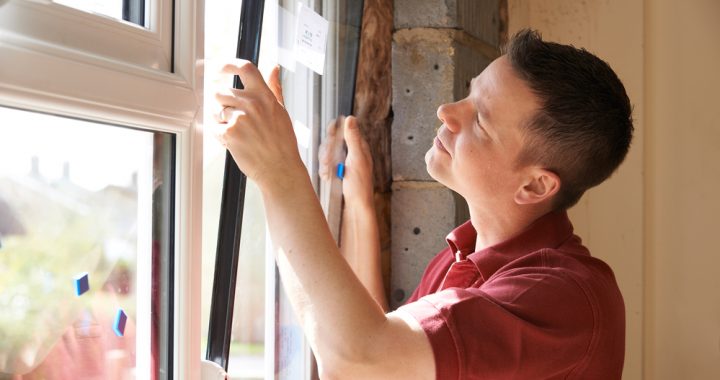 The Ultimate Guide to Window Replacement in Phoenix: Speed and Quality Combined
The Ultimate Guide to Window Replacement in Phoenix: Speed and Quality Combined 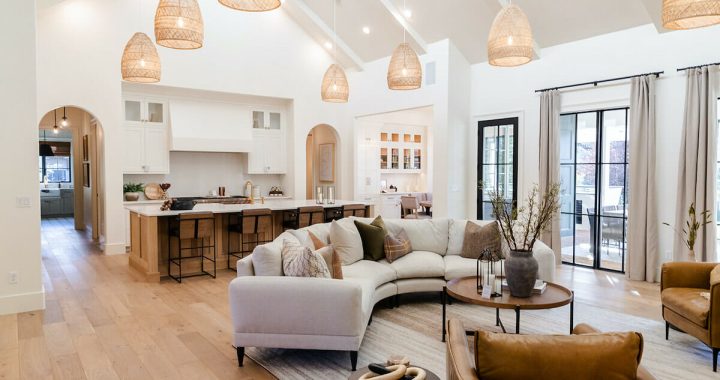 California Dreamin’ in Small Spaces: How to Master Minimalism with California Casual Design
California Dreamin’ in Small Spaces: How to Master Minimalism with California Casual Design  The Essential Guide to Finding the Best Lawn Care Service in Lakewood, CO
The Essential Guide to Finding the Best Lawn Care Service in Lakewood, CO  Safe, Quick, and Hassle-Free Large Furniture Removal: How Professional Junk Removal Can Make Patio Set, Piano, and Cabinet Disposal Easier
Safe, Quick, and Hassle-Free Large Furniture Removal: How Professional Junk Removal Can Make Patio Set, Piano, and Cabinet Disposal Easier  Why Artificial Grass is Your Best Bet for a Lush Lawn in San Diego
Why Artificial Grass is Your Best Bet for a Lush Lawn in San Diego 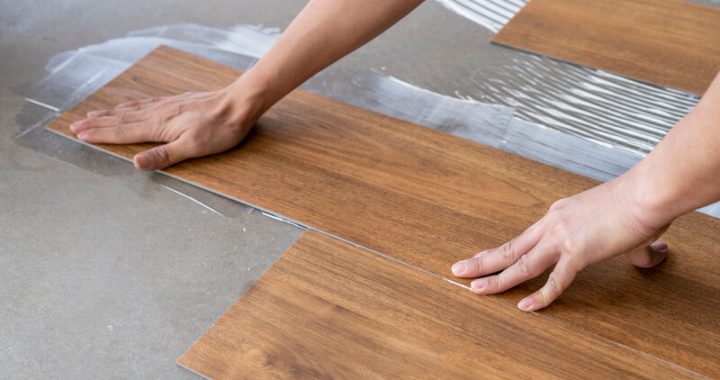 From Budget-Friendly to Luxury: Comparing Types of Vinyl Flooring
From Budget-Friendly to Luxury: Comparing Types of Vinyl Flooring  Plumbing: The Unsung Backbone of Modern Living
Plumbing: The Unsung Backbone of Modern Living  Home Selling: Navigating the Complexities of the Real Estate Market
Home Selling: Navigating the Complexities of the Real Estate Market 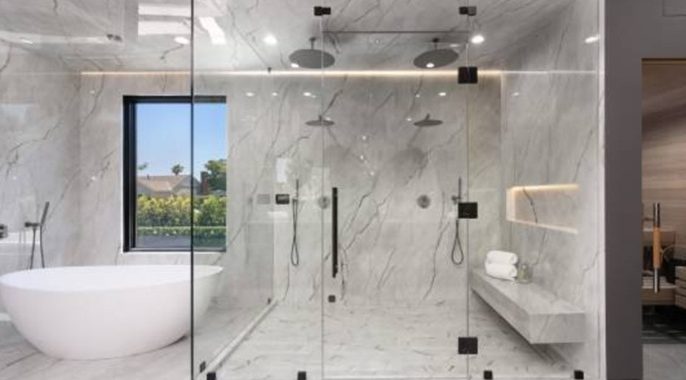 Sleek Bathroom Styles for Contemporary Coburg Homes
Sleek Bathroom Styles for Contemporary Coburg Homes